- What is web application penetration testing?Web application penetration testing is a simulated cyberattack on a web app to find and exploit vulnerabilities before real attackers do. It identifies flaws like SQL injection, XSS, CSRF, authentication bypass, and logic errors.
- Why is web application penetration testing important?
It helps prevent data breaches, ensures compliance with standards like PCI DSS, HIPAA, and SOC 2, and protects brand reputation by proactively addressing security weaknesses.
- How often should I perform web application penetration testing?
At least once per year, and after any major code changes, new feature releases, or security incidents.
- How long does a web application penetration test take?A typical assessment lasts 5–15 business days, depending on application complexity, number of user roles, and testing depth.
- How much does web application penetration testing cost?Prices range from $5,000 to $50,000+ based on scope, size, and industry compliance requirements.
- Does penetration testing disrupt normal operations?No — ethical testers follow safe procedures that won’t damage systems or interrupt regular business activities.
- What’s the difference between web application penetration testing and vulnerability scanning?Vulnerability scanning is automated and finds known weaknesses, while penetration testing uses manual techniques to exploit vulnerabilities, uncover logic flaws, and validate real-world risk.
- Who should conduct my web application penetration testing?Choose certified professionals (OSCP, CREST, GPEN) with proven industry experience and a track record of thorough reporting and remediation support.
- How much does web application penetration testing cost?Pricing usually ranges from $2,000 to $20,000+ depending on the number of applications, complexity, compliance requirements, and whether manual testing is included.
